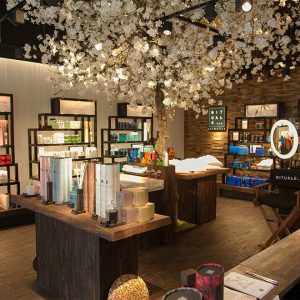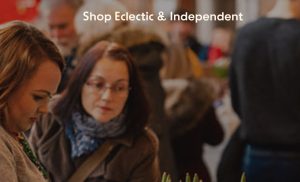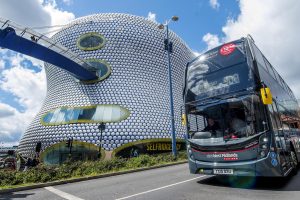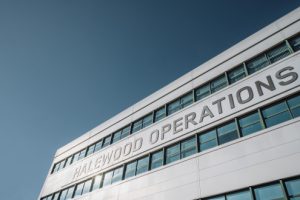Stepping backstage at The REP Theatre

I have always been appreciative of theatre, with years spent seeing shows at venues across the country. However, I am guilty of often heading elsewhere when it comes to shows, like London and Manchester and I often forget about the theatres right on my doorstep in Birmingham.
Admittedly, the last time I headed to The REP in Centenary Square, was because of a school trip years ago, but since spending the afternoon discovering what makes The REP by far Birmingham’s best theatre, I have seen a different side to the city’s theatre scene.
I headed along to The REP on a Thursday afternoon and joined the back of an excited group of around 12 people about to be taken on a backstage tour. We were told straight away that there would be certain things that we wouldn’t be able to do on other tours, including being able to head into all three theatres and having a moment on the stage. This was due to the sheer amount of shows taking place that day, with various rehearsals and scene preparations. However, the group remained joyous and accepted that it is simply one of those things, especially when you spend the afternoon in a busy theatre.
The tour started with an explanation of the theatre’s history and background. Sir Barry Jackson, the founder of The REP, built a 464-seat theatre in Station Street, which is now known as The Old Rep. The current REP arrived just off Broad Street in 1971 and has since undergone redevelopment as part of the Library of Birmingham project from 2011 to 2013. We were told everything from why the theatre is designed the way it is – no balconies, pillars or boxes means that everyone shares the same space and view – to some of the well-known names that started their career at the theatre.
We then headed into The House, the biggest theatre within The REP that sits over 800 people. Due to other performances taking place, we were not able to see The Studio or The Door, but this was quickly forgotten about once we got to see The House completely empty and appreciate it in all its glory. The set of The Exorcist was on the stage and the team were doing various light and sound tests, which scared me so much I immediately went and booked a ticket to see the play.

We then headed into the huge workshops where clusters of people created future sets. This took me most by surprise, I had heard that The REP was a working theatre, but seeing huge sets being built and decorated, it brought it home just how important the theatre is. We then learned that a huge amount of shows created at the theatre go on to tour the rest of the UK. In 2014/15, The REP created 15 productions and 10 of them went on tour. However, the thing I loved the most were the smells; the paint, fresh wood and glue, it felt like I was breathing in decades of incredible shows.
Soon after, we were whisked away to the top floor of the theatre, where we were taken through to costume. There were several rows of costumes from previous and current productions at the theatre, as well as mannequins and what looked like hundreds of tape measurers, pins and even more shoes and accessories. There was also book shelves full to the brim of books about fashion and history, where the costume designers often find the inspiration for the hundreds of actors that take to the stage every year. We then headed into the wigs department, for me, a personal highlight. The room is packed full of hair accessories and a whole range of wigs that have been created by the workers in the department. We were even talked through how they go about creating a wig and how precise they must be.

Before ending the tour, we were shown through staircases and corridors which were full of photos of past productions from both The Old Rep and The REP. It was heart-warming to see just how many actors we see every day on the TV and in our favourite films have indeed had a stint at The REP. We were even told a few stories about what a few of them got up to during their time in Birmingham.
When the tour had ended and I waved goodbye to the group of people I had become rather attached to during the experience, I took a stroll around the theatre again and thought about just how many people have had the pleasure of seeing shows over the years, as well as the countless talents that have called the theatre their temporary home.
The tours are done by volunteers, where there are currently 30 on standby just waiting to share their stories of the theatre with visitors. The behind the scenes tour is truly special as not only do you learn about The REP, you learn about theatre as a whole.
The REP is looking for businesses across the West Midlands to help fund tickets for local disadvantaged children to see the theatre’s production of Treasure Island this Christmas.
The theatre is eager for children who wouldn’t normally have the opportunity to visit The REP to be able to. Nearly half of under 18 year olds in Birmingham live in the top 10% of the UK’s most deprived areas, meaning they are rarely inspired by cultural outings or have positive, educational influences outside of their everyday lives.
The REP is hoping, with the support of local businesses, to spread Christmas cheer by providing free theatrical outings for at least 250 young people from Birmingham who experience disadvantage or learning disabilities. The project will also include free curriculum resources that will follow up the young people’s visit to the theatre.
The tickets will be offered to young people in Birmingham including those living in Birmingham city centre and the Erdington district and will be aged between 6-16.









